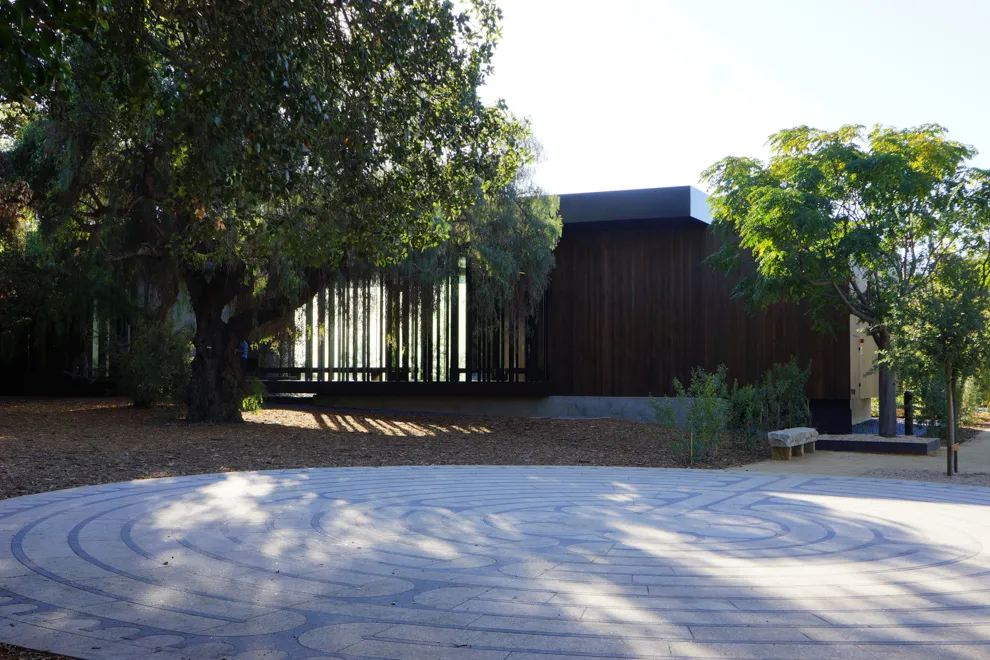The Windhover Contemplative Center reopened in March after its closure in 2023 due to serious storm damage.
Hosted by the Office of Religious and Spiritual Life (ORSL), the center’s official reopening ceremony featured readings, a singing bowl and meditations led by leaders from different faiths and backgrounds.
Issa Sadamoto ’28 is looking forward to visiting the center with his PSYC 15Q: Consciousness and Self Psychology introductory seminar. Meditation is a feature of the class, which explores the notion of the self and conscious awareness.
“The very experience of existing is consciousness,” said Sadamoto. “Meditation can help you realize that.” A field trip to Windhover is a highlight of the syllabus.
“Even without the class, I personally wanted to go to Windhover,” said Sadamoto, who first noticed the building in the fall and was disappointed to learn it was indefinitely closed at the time.
Originally opened in 2014, Windhover was built as a space for reflection and contemplation. A technology-free zone, the center was originally designed to house acclaimed painter and former Stanford professor Nathan Oliveira’s “Windhover” series. Oliveira passed away in 2010, just four years before the building was complete.
“Windhover was the first time I ‘got’ relatively abstract paintings, at least in terms of having an experience through them,” said Marcus Alagar ’28, who visited for the first time recently.
Alagar reflected that the “absolute quiet, peace, and tranquility” in the building helped channel his focus to the paintings, calling his visit a “powerful experience.”
The unique building is based on rammed earth construction, an ancient technique forming walls out of natural aggregates like clay, sand, cement and gravel. The San Francisco-based architecture firm Aidlin Darling, which initially designed the building, was also involved with the reconstruction process.
Built with contemplation in mind, the center is used for more than just meditation. Vayana Stoyanova ’28 has visited multiple times and thinks Windhover is “a wonderful place for stargazing and reflection.”
Though the building is now open 7 a.m. to 7 p.m. daily to everyone with a Stanford ID, construction and restoration of the art is ongoing.
